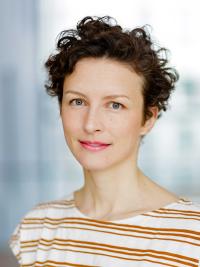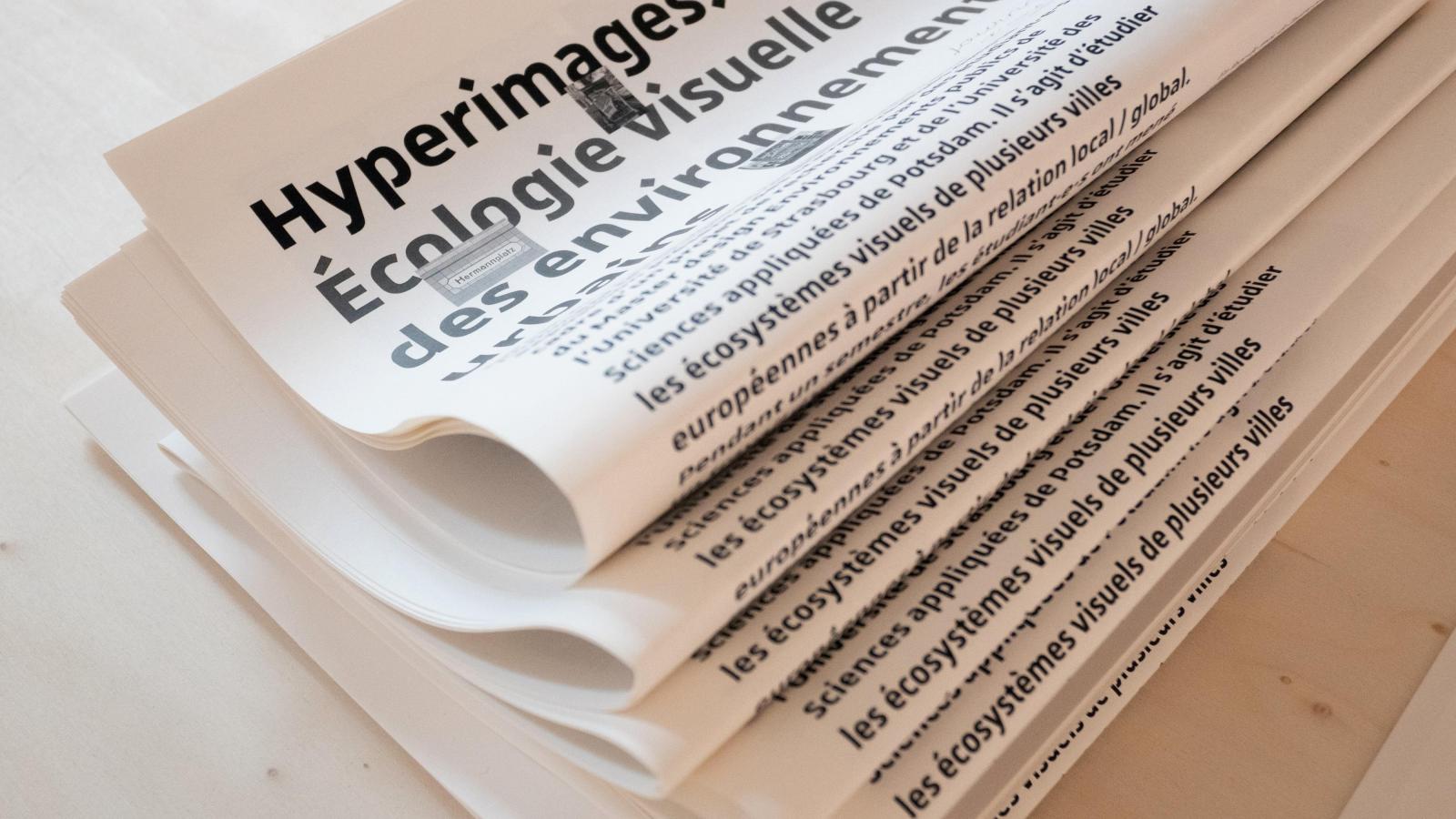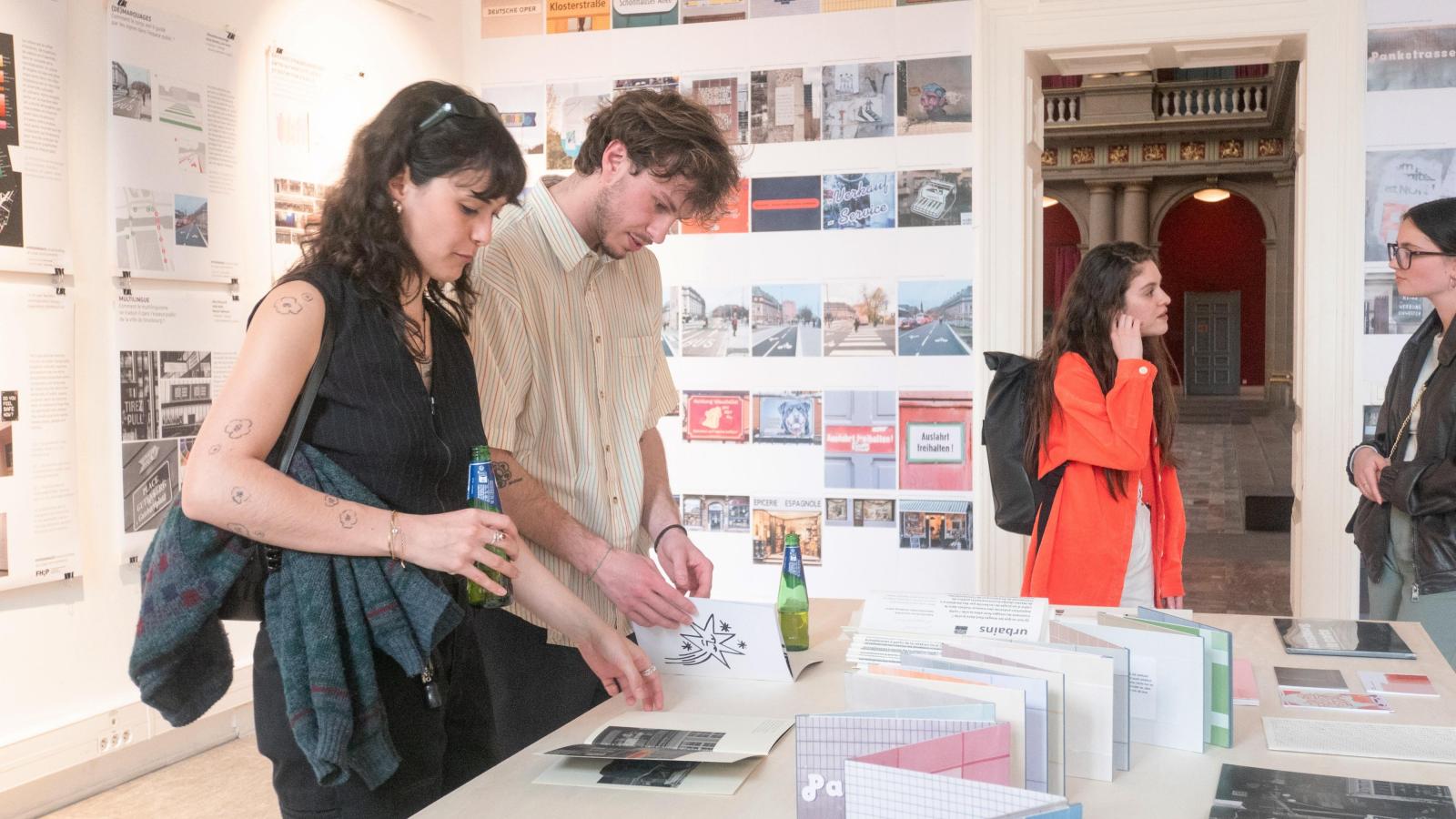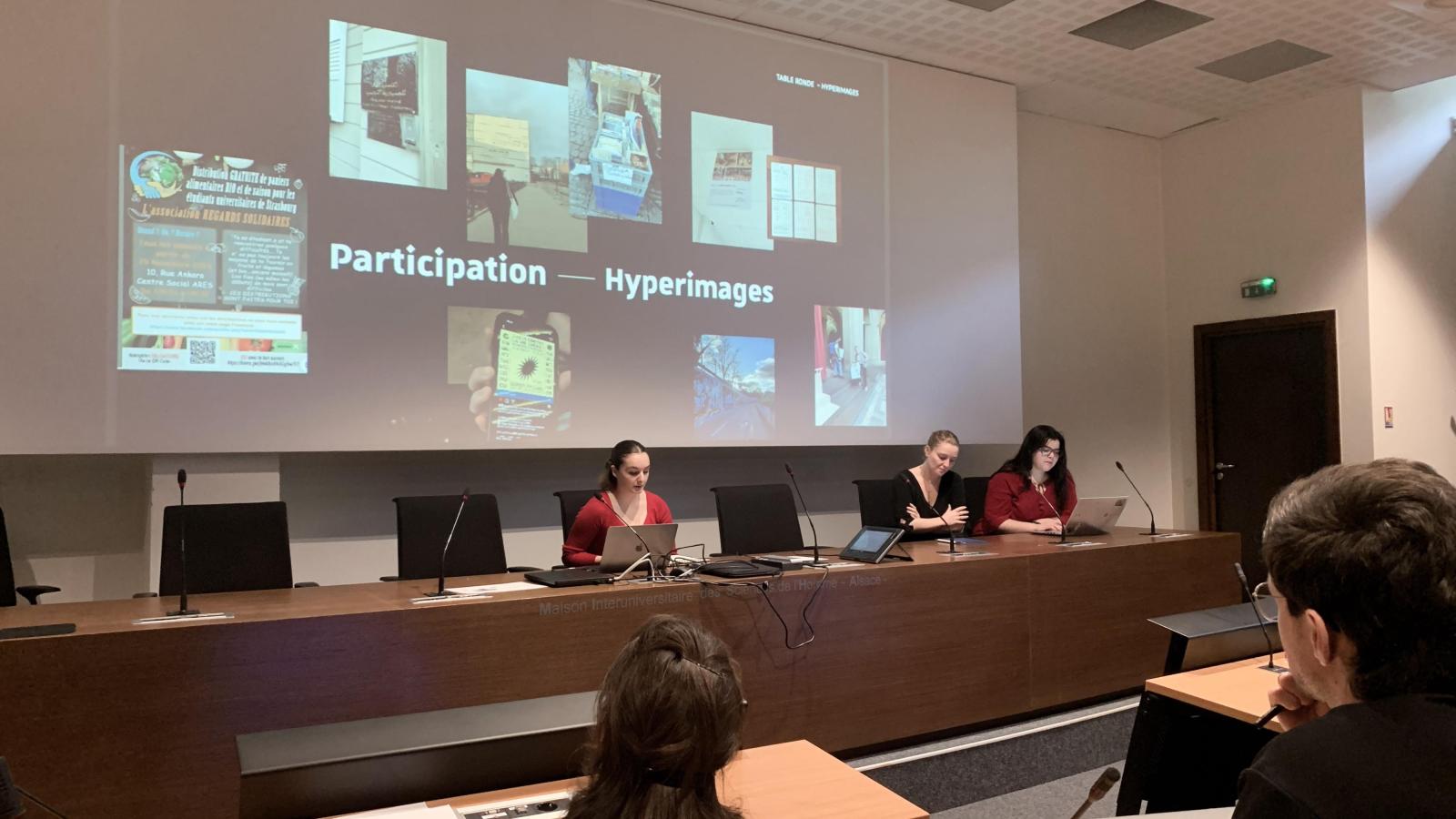Hyperimages – Visual Ecology of Urban Environments
"Hyperimages – Visual Ecology of Urban Environments" is a research project between the University of Strasbourg in France and the University of Applied Sciences Potsdam in Germany.

- University of Strasbourg
Hyperimages analyses and compares the visual ecosystem of our global cities. How can the city become a field of research for graphic design students with different languages and cultures?
Since the 1960s, the modern city has transformed into a "global city" (Mirzoeff 2018), it has become globalised, which goes hand in hand with new ways of seeing and using public space. Thus, many of the images that one encounters in an urban space are no longer specific to that space. These images are parts of larger visual organisms that have become familiar to the inhabitants of both Taipei and New York through global dissemination. Conversely, other signs have a local rather than a global character: certain graffiti, a street name, a hand-painted sign or a poster designed by a neighbourhood association. The visual ecosystems of cities are heterogeneous milieus in which these different types of images live loudly together.
Where is the visual identity of the city located in these heterogeneous collections of images? What makes up the landscape and the visual ecosystem of these cities? What is the visual ecology of these urban environments? These and other questions are being asked by students from the University of Strasbourg and the University of Applied Sciences Potsdam as part of a project that combines research and practice to analyse the visual ecosystems of French and German cities based on the local/global relationship. Observing images in their contexts of use, collecting, analysing and comparing signs, seeing the familiar differently. How can the city embody a field of research for graphic design students with different languages and cultures? What methods and tools are conceivable for a project that combines research and practice?
Team of the University of Applied Sciences Potsdam:
Prof. Christina Poth (project management), Matthias Beyrow (project participation), Felix Walser (design and technical realisation of prototype hyperimages platform), Tim Alder (research and image post-processing), Leonie Schatter (research).
Team of the University of Strasbourg:
Vivien Philizot (project management), Éloïse Cariou (participating course)
Contact




